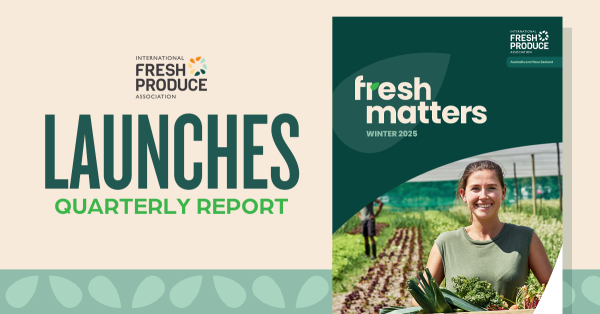
Indigo Ag CEO David Perry Talks Indigo Acres, Grower Profitability, and Environmental Sustainability
BOSTON, MA - The Organic Grower Summit is just a day away and the conversation around sustainability and regenerative agriculture has been reaching a critical mass. Indigo Ag is one organization helping to shift agriculture’s business model from vision to possibility in this arena, as it builds a system responsive to demands for high-quality and sustainably produced food and fiber through the development of microbial and digital technologies that improve grower profitability, environmental sustainability, and consumer health.
As we continue to rally around sustainability and regenerative ag, the company’s President and CEO David Perry has been slated to take the stage as a coveted keynote speaker at the Organic Grower Summit to share the advantages and benefits of Indigo’s programs and more. One topic of keen interest? Its Indigo Acres platform.
 “Indigo Acres is designed to encourage and reward growers for adopting regenerative practices, and to assist farmers in scaling these practices across their operations,” David tells me. “We launched the program in November of 2019 to grain growers, but hope to expand access into more specialty crops in the future.”
“Indigo Acres is designed to encourage and reward growers for adopting regenerative practices, and to assist farmers in scaling these practices across their operations,” David tells me. “We launched the program in November of 2019 to grain growers, but hope to expand access into more specialty crops in the future.”

In addition, Indigo Acres provides full season support like access to Indigo agronomists, microbial seed treatments, crop pricing tools, premium buyer contracts, and quality testing, to further growers’ profitability potential.
“Growers who increase their adoption of regenerative practices should also increase their soil’s ability to sequester carbon dioxide. They’ll be paid for every ton of carbon dioxide captured to enrich their soil,” David expresses.
When I ask him what are some of the little-known facts or misconceptions about regenerative agriculture and its impact on the bottom line, he shares that the company frequently hears that the transition to regenerative farming practices coincides with an initial dip in yield and profitability. Second, that farmers don’t have a financial incentive to change their practices.
“To address the first concern, while some growers may experience an initial decrease in yield, based on hundreds of conversations and observed experiences we’ve had with farmers across the country, we know that some have reported a positive increase in yield in their very first growing season,” David reflects. “That, matched with reductions in input costs as a result of reduced fertilizer and chemical use, leads to profitability increases.”
David goes on to express how the transition to regenerative farming practices is best supported with experience.
“Growers have higher success rates when they have support in the transition, which is where we come in. Indigo provides growers with data-driven recommendations from agronomists specializing in regenerative systems. With regards to incentives, Indigo compensates growers for capturing carbon dioxide and reducing emissions, which are direct outcomes of adopting regenerative practices. At 15 dollars per ton of carbon dioxide sequestered, this represents a significant new revenue stream for growers.”
So, how did Indigo Ag come to fruition and what is the vision behind the company, you may ask? In a nutshell, Indigo’s mission is to harness nature to help farmers sustainably feed the planet.

“We started with a series of questions: How do we feed a growing population? And how do we do it in a way that is more sustainable for the planet, healthier for consumers, and more profitable for growers?” David shares. “Inspired by insights from the human microbiome, Indigo began with the hypothesis that naturally occurring microbes living inside a plant can optimize crop health and improve productivity. These microbes became the basis for seed coatings—innovative, nature-derived products that complement a plant’s natural processes to improve crop health while increasing yield in the face of external stress.”
However, he tells me, microbes only get to a piece of the story.
“Indigo recognized the need for an integrated, systems-approach to agriculture that would preserve the identity and value of high-quality, sustainably grown crops from the grower to the buyer to the ultimate consumer. These observations and direct insights from growers made it clear that the system of agriculture needed to be de-commoditized,” David says. “Today, Indigo is taking an integrated approach to fundamentally de-commoditize agriculture and improve outcomes for people and the planet. We have implemented over ten different business lines which span across the value chain, from our microbial seed solutions to digital platforms like our grain marketplace. This past June, we launched The Terraton Initiative, a global effort to remove one trillion tons of carbon dioxide and store it within our agricultural soils.”
If each company is a piece of the larger puzzle, then each one of Indigo’s business lines represents an important piece of the overall system. If implemented collectively, David adds, they will make a significant impact on the outcomes of our food and agriculture system.



















